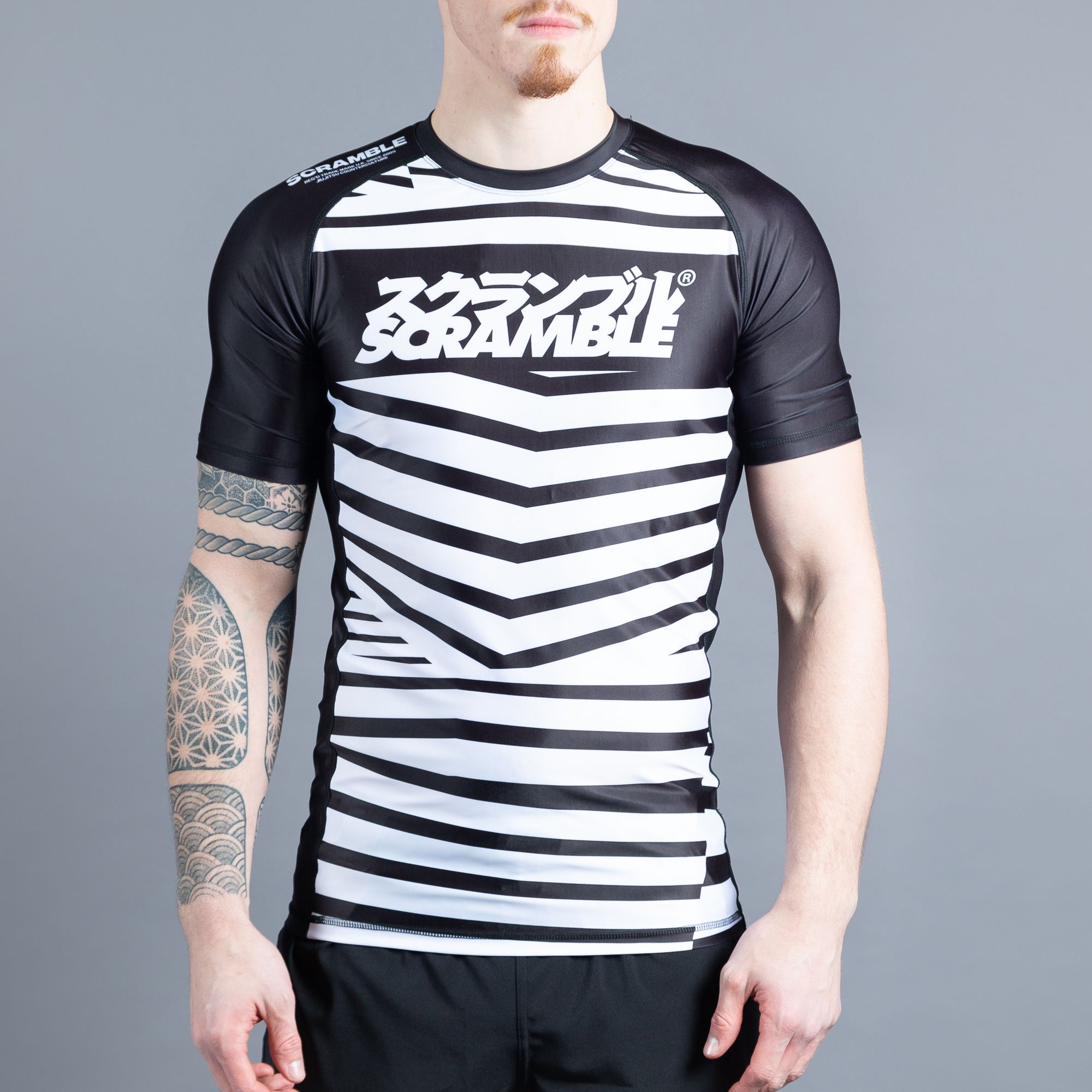

However, in the same letter, Kerr also called for countershading, the use of paint to obliterate self-shading and thus to flatten out the appearance of solid, recognisable shapes. Hiding these would make ships less conspicuous, and would "greatly increase the difficulty of accurate range finding". Taking up the zebra example, Kerr proposed that the vertical lines of ships' masts be disrupted with irregular white bands. The target's masts are especially useful for rangefinding, so Kerr proposed disrupting these with white bands.
#Dazzle camouflage series#
Arthur Lismer similarly painted a series of dazzle ship canvases.Įyepiece image of a warship in a naval rangefinder, image halves not yet adjusted for range.
Edward Wadsworth, who supervised the camouflaging of over 2,000 ships during the First World War, painted a series of canvases of dazzle ships after the war, based on his wartime work. Experiments were carried out on aircraft in both World Wars with little success.ĭazzle attracted the notice of artists such as Picasso, who claimed that Cubists like himself had invented it. So many factors were involved that it was impossible to determine which were important, and whether any of the colour schemes were effective. The result was that a profusion of dazzle schemes was tried, and the evidence for their success was, at best, mixed. Each ship's dazzle pattern was unique to avoid making classes of ships instantly recognisable to the enemy.

ĭazzle was adopted by the Admiralty in the UK, and then by the United States Navy. Norman Wilkinson explained in 1919 that he had intended dazzle primarily to mislead the enemy about a ship's course and so cause them to take up a poor firing position. Unlike other forms of camouflage, the intention of dazzle is not to conceal but to make it difficult to estimate a target's range, speed, and heading. Credited to the British marine artist Norman Wilkinson, though with a rejected prior claim by the zoologist John Graham Kerr, it consisted of complex patterns of geometric shapes in contrasting colours interrupting and intersecting each other. Then, step into the trenches with these powerful World War I photos.SS West Mahomet in dazzle camouflage, 1918ĭazzle camouflage, also known as razzle dazzle (in the U.S.) or dazzle painting, was a family of ship camouflage used extensively in World War I, and to a lesser extent in World War II and afterwards. Intrigued by this look at dazzle camouflage? Next, see how some of Earth's most fascinating creatures conceal themselves with these photos of animal camouflage in action. The gallery above features some of the most eye-popping examples of dazzle camouflage, primarily from the World War I-era, when the method saw the most widespread use. As radar, rangefinders, and aircraft became more advanced, the success rate of dazzle camouflage suffered, and its use dwindled. The tactic wouldn't last that long, however.

During World War II, the Germans also adopted the technique. The scheme's effectiveness varied wildly, with some historians saying that governments put too many variations into use to accurately gauge the potency of the paint. With World War I still raging, the Admiralty adopted this so-called "dazzle camouflage" technique, and the U.S. If everything went to plan, the coloring would thus make the streaked ship harder to hit. When covering a ship, experts hoped that the coloring would confuse nearby submarines about the vessel's true size, shape, and intended navigation. Rather than pull inspiration from the animal kingdom or art theory, Wilkinson suggested using abstract "masses of strongly contrasted color," such as highly conspicuous streaks, blobs, and shards. He shot the zebra stripes down as "freak methods," and ones which the Admiralty considered to be "of academic interest but not of practical advantage," according to author Peter Forbes.īut then one of their own, marine artist and Royal Naval Volunteer Reserve officer Norman Wilkinson, piggybacked on these ideas and refined them. However, counterintuitively, the pair hoped that these stripes would act as a form of camouflage - meant not to conceal, but to confuse.Ĭhurchill, then Great Britain's First Lord of the Admiralty, rejected the idea. At the outset of World War I, an American artist and British zoologist independently attempted to convince Winston Churchill to paint stripes on all Royal Navy ships.


 0 kommentar(er)
0 kommentar(er)
